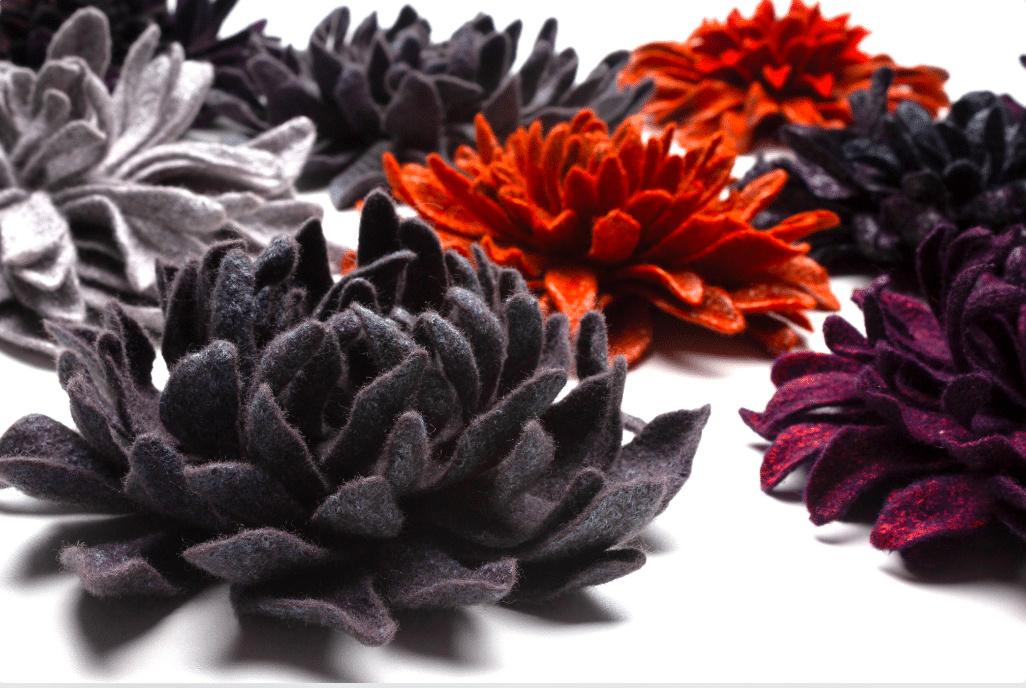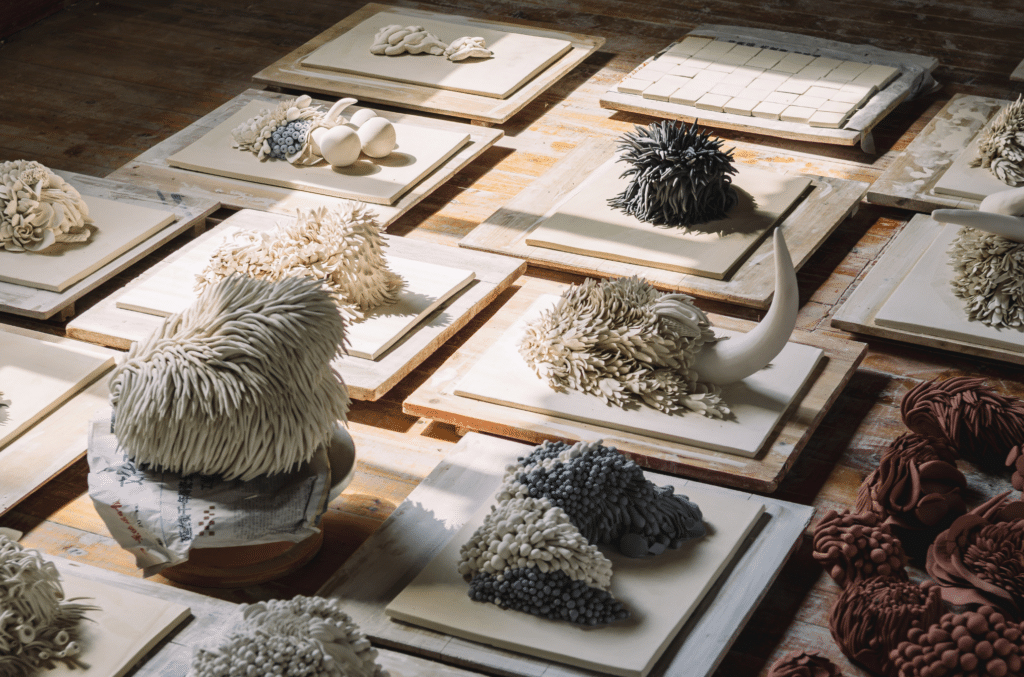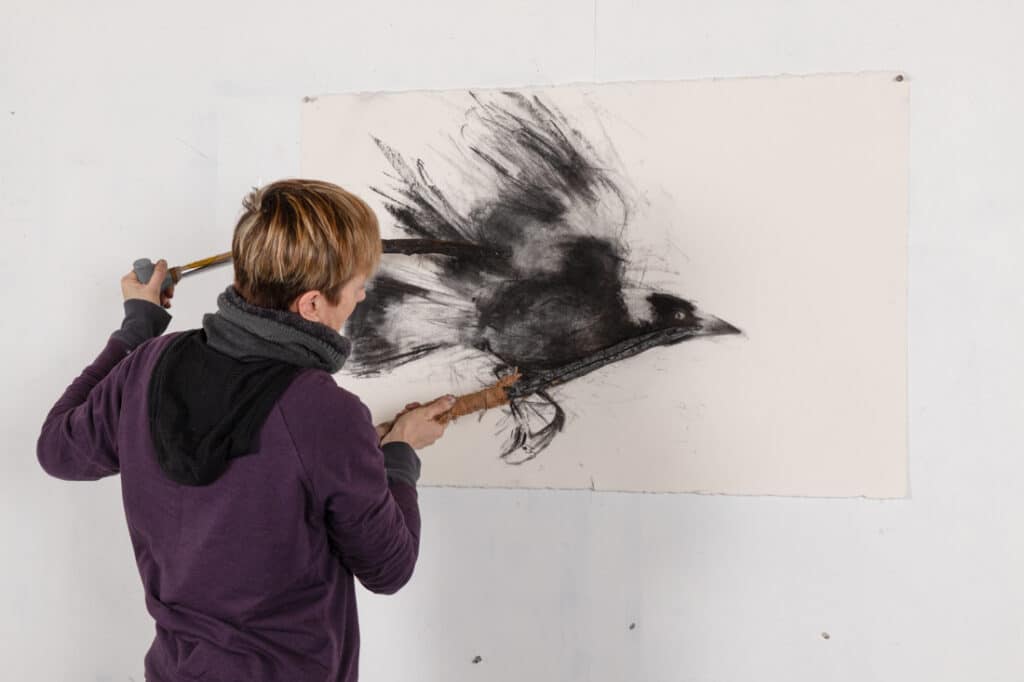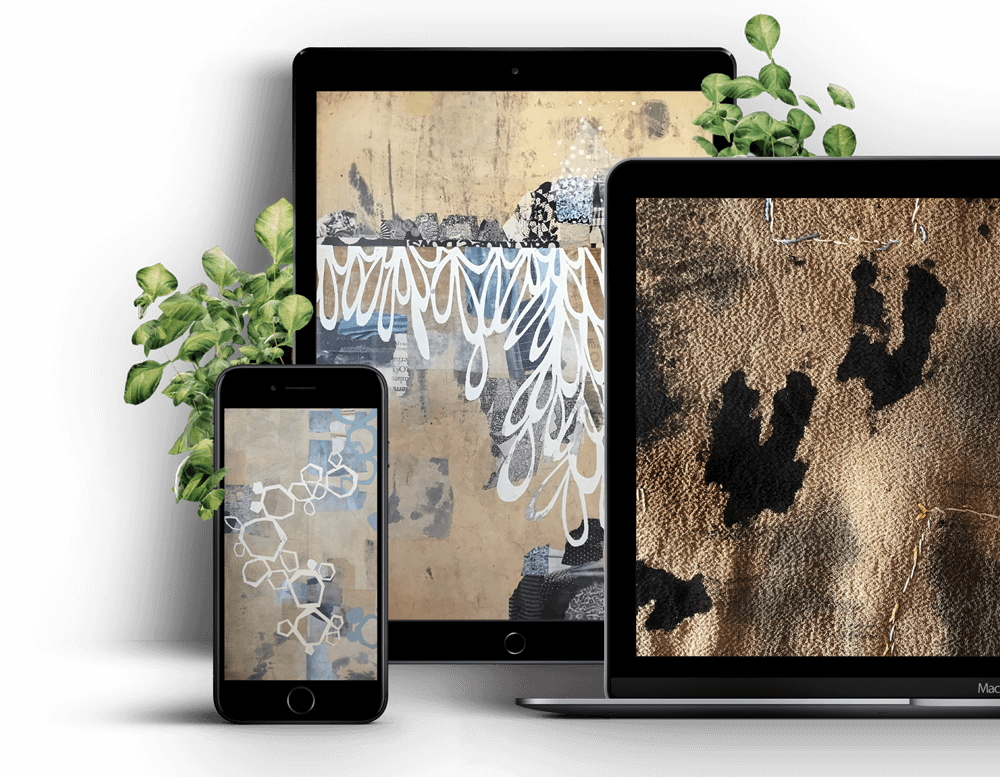The Life and Work of Judith Scott: Fiber Artist Extraordinaire

Judith Scott (c) Creative Growth Center, Photographer Leon Borensztein
Imagine viewing an exhibit at the Brooklyn Museum, Bound and Unbound, showcasing the works of an artist unknown to you. The room is filled with large and colorful sculptures made from a variety of materials. The sculptures are energetic and visually compelling and often made from materials not usually seen in art exhibitions in 2014. At some point, you read the exhibit notes printed on the wall and discover that the exhibition is a posthumous celebration of the work of Judith Scott. As you read further, you also discover that Judith Scott had Down Syndrome and that she was deaf and unable to communicate in words. Does this information change your view of the art you have just viewed? Does it make you think more about the relationship between the art and the artist who made it? Does it make you wonder if Scott would have had an exhibition in a major museum if she did not have Down syndrome?
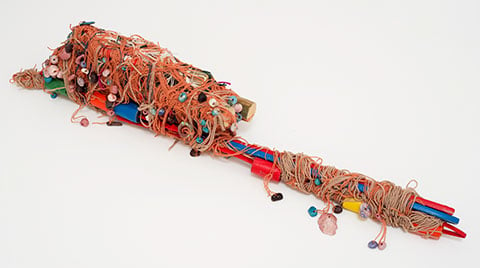
Figure 1 Untitled, 1993; Fiber and Found Objects; 44 by 10 by 10
© Creative Growth Art Center; Photo: Benjamin Blackwell
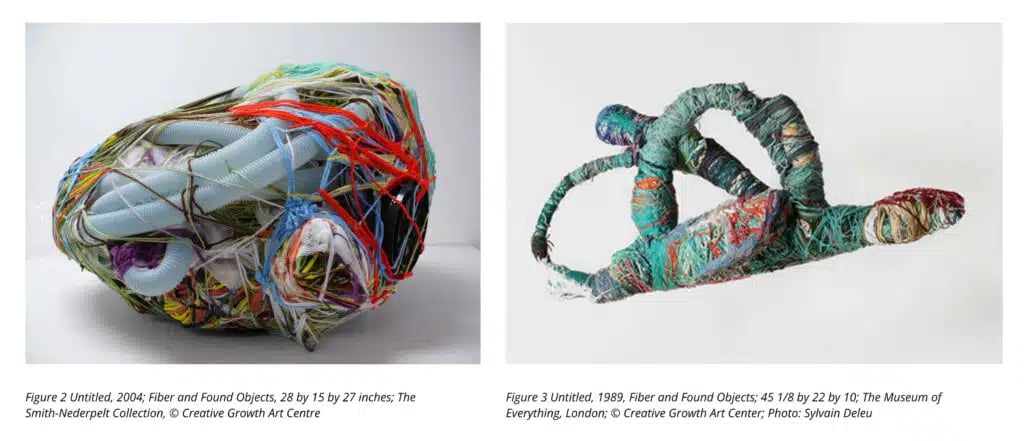
The Facts of Judith’s Life
Judith Scott was born in Cincinnati, Ohio, in 1943. She was a fraternal twin. Her sister, Joyce, did not have Down Syndrome and lived a normal life. As an infant, Judith contracted scarlet fever, which led to a hearing loss that was not discovered until much later in her life and that probably contributed to others viewing her as retarded and uneducable. Judith lived at home, in a middle-class family, with her parents, sister, and older brothers until it was time for her to start school. In those early years, her parents endeavoured to treat both girls the same.
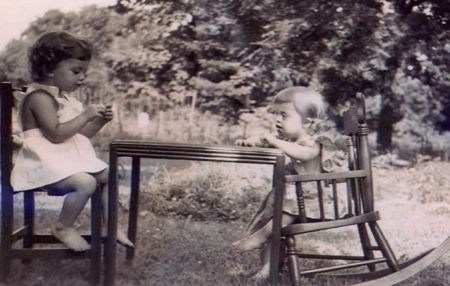
Figure 4 Judith and Joyce, Age 2 ½; © Scott Family
When it was time for the girls to start school, Judith was unable to pass the entrance exam for the one classroom that existed for children with disabilities, due to her undiagnosed deafness. As a result, the school deemed her to be “uneducable” and advised her parents to place her in the Columbus State Institution, a school for mentally disabled people. This decision had a profoundly negative effect on both Judith and Joyce. Judith soon exhibited behavioural problems and became alienated from the other children. In addition, because of her deafness, she failed the school’s oral testing and was considered to have an IQ of only 30. This resulted in her being denied opportunities for any training, further increasing her alienation and her behavioural issues. As these behavioural issues became greater, Judith was moved to a smaller state institution in Ohio, one where she got more attention. She remained there until 1985.
Throughout 35 years of what was essentially incarceration, Judith was not abandoned by her sister. Joyce visited Judith as often as she could and eventually petitioned to become her legal guardian, a complex process that involved many steps and several years. Once Joyce obtained guardianship, she brought Judith to live with her in California. Judith remained at Joyce’s home for a few months and then moved into a close-by group home where her family visited her regularly.

Judith Scott (c) Creative Growth Center
In 1987, Judith began attending a program at the Creative Growth Center in Oakland, California, one of the first places in the US to provide studio space and training for artists with disabilities. At first, Judith showed little interest in the Center’s programs, aimlessly scribbling on paper but not doing much else. Just as the Center was considering discharging Judith from its programs because of a lack of interest in what the Center provided, Judith attended a workshop conducted by fiber artist Sylvia Seventy. This experience provided Judith with an art form that was compelling for her, and that led to her artistic breakthrough. Instead of stitching the textile materials provided in the workshop as most other students did, Judith began to use the materials to create fiber sculptures.
As her talent in this area quickly became apparent, Judith was provided with many kinds of materials to use in her sculptures and encouraged to continue with that work. Sometimes she appropriated additional materials, not her own, to add to the mix. For the next 18 years, working in a diligent and concentrated fashion 5 days a week, Judith created more than 200 fiber sculptures. Some of her pieces took weeks or months to complete. She was a hard worker, very self-directed, and did not repeat forms or color schemes in her pieces. She continued her work until her unexpected death of natural causes in 2005 at the age of almost 62. She lived nearly 50 years longer than was expected at her birth.

Untitled, 1994; 27 by 23 by 17; © Creative Growth Art Center; Photo: Benjamin Blackwell

Untitled, 1993, © Johann Feilacher
Beyond the Facts
In 2016, eleven years after her sister’s death, Joyce Scott published a book, Entwined: Sisters and Secrets in the Silent World of Artist Judith Scott. This fascinating book takes us far beyond the facts of Judith’s life and brings us into a world of secrets, family dysfunction, but also fierce love.
As children, Joyce and Judy (as she was called in her family) were extraordinarily close. They spent their days together and slept in the same bed at night, curled around each other as they slept. Their early childhood was idyllic. In the suburb of Cincinnati where they lived, there were fields and forests to play in and explore, animals and trees to connect with, and neighborhood kids who wandered in and out of their lives. Joyce describes their early environment as Eden.
When the twins were six, Joyce began to realize that Judy was somehow different. She started to notice that some of their neighbors shunned Judy. She also realized that there was a reason that the twins were locked in their room when non-family members came to visit or play bridge, though she really didn’t understand what it was. Only as an adult did Joyce learn that in the 1940s, having a “defective” child was a source of shame and blame and something best to keep hidden.
One day, when Joyce woke up, Judy was gone. Her mother explained that her father had taken her to a special school where she would be able to learn. At first, her family pretended all was well and reaffirmed to themselves that they had made the right decision. Over time, her parents stopped talking about Judy and almost convinced themselves that she no longer existed in their lives. But that decision, however well-meaning, took its toll on the entire family. Their mother stopped caring for her children and home and eventually had a nervous breakdown requiring hospitalization for some months. Their father had a heart attack and never recovered his former aplomb. Four years after Judy’s removal from the family, he had a second heart attack and died.
Judy’s family visited her a few times in the early years of her institutionalization, but the visits were so painful, especially for her mother, that they became rare. Eventually, as she got older and more independent, Joyce visited more often, sometimes driven by one of her brothers. Over the years, Joyce’s heart continued to ache for her sister. She was especially horrified when, on a visit while she was in college, she discovered that all of Judy’s teeth had been pulled out. The attendant cavalierly justified this by saying that now Judy would have no pain or trips to the dentist.
Joyce’s own life was a complicated one, involving 3 marriages, and 3 daughters, including one born when Joyce was a teenager and given up for adoption. She held a variety of jobs, often working with or teaching disabled children. Eventually she received a degree in psychology and later a nursing degree. Despite her complex life, Joyce continued to visit Judy as often as she could, bringing her daughters with her. Joyce’s children immediately bonded with Judy, and these bonds remained strong throughout Judy’s life. Eventually, Joyce found and reunited with the daughter she had given up at birth, and this daughter, too, became part of the circle of love enveloping Judy.
In the early 80s, Joyce attended a silent retreat in the Santa Cruz mountains. At one point during the retreat, something significant happened. Joyce described it this way:
“Then, gradually, a strange lightness begins to fill my body, a lightness and a sense of joy. In the center of my heart, I feel Judy and me, the two of us still together, still one. I know now our connection has never been broken and can never be broken or changed. I realize the absurdity of our separation and know with absolute certainty that it is no longer necessary, that it is possible to spend the rest of our lives together.”
Following the retreat, Joyce researched what she would need to do to become Judy’s guardian. There were many steps involved, but eventually, she completed them all, and in 1985 Judith arrived at the San Francisco airport alone after a long flight during which she was supposed to be accompanied. After an endless embrace with Joyce and her children, they drove to Joyce’s home in Berkeley, where Judith began the next phase of her life, finally reunited with her beloved sister.
Determined to make the remaining years of her sister’s life as full and rich as possible, Joyce researched programs available for people with disabilities. Eventually, she learned about the Creative Growth Center but was skeptical that it would work for Judy since she was not an artist. The Creative Growth Center was everything that Joyce had hoped for, but Judy remained unengaged in the program it offered until she watched the workshop given by Sylvia Seventy described above. Observing what she was doing after the workshop, the new director of the Center commented “that Judy’s art would become her language to address the world.” The first piece Judy made at the Center was a twin-like form. Joyce wept when she saw the work, viewing it as Judy’s way of expressing their twinness, their two bodies joined as one.
The Work of Judith Scott
Judith’s work is quite varied in shape and size, and most of it consists of mundane objects such as keys, tubing or bicycle wheels that are wrapped in yarn, string, twine, or strips of fabric. The objects that are wrapped serve as often-hidden armatures. Many of her pieces feature pairs, perhaps reflecting the duality she experienced as a twin. Often the wrappings are complex, consisting of many layers. The colors of each piece were carefully and deliberately chosen.

Figure 8 Untitled, 2003-2004; Fiber and Found Objects; 45 by 47 by 31; Collection of Orren David Jordan and Robert Parker; © Creative Growth Art Center; Photo: Addison Doty

Figure 9 Untitled, 2002, © Sarah DeSantis/Brooklyn Museum
An article in Art 21 described her work this way:
“Scott’s vivid and enigmatic sculptures, which evolved in shape and material throughout her career, expressed her imagination in ways she could not through speech. Her abstract works have been compared to nests and cocoons, while her processes alluded to both ritual and play. Described as hermetic and complex, the wrapping suggests protection and concealment.”
In 1999, Judith had her first exhibition, held at the Creative Growth Center. She attended along with her family, albeit reluctantly, clad in a blue evening dress and fuzzy pink bedroom slippers.

Judith Scott (c) Creative Growth Center
In her book, Joyce describes the reactions of visitors to the exhibition:
“I see reflected in their eyes the same shock and stunned surprise that I experience in the presence of these pieces. I recognize their sense of awe as they move into the room, their sense of the unspoken coming to life, being given form. Emotions, experiences in their pure form, undiluted by words or the repetition of stories told and retold…. Here, deeply moving but unfathomable, we detect the experience of betrayal, the sense of loss and longing; here, the feeling of closeness, of oneness, of love.”
The exhibition was also a celebration of the publication of John MacGregor’s book, Metamorphosis: The Fiber Art of Judith Scott. At one point, when MacGregor took a break from signing copies of the book, Judith took his place at the table and signed the remaining copies by completely scribbling on the title page to the delight of her crowd of admirers.
As the popularity and visibility of Judith’s work increased, it was included in many additional group exhibitions as well as in 4 solo exhibitions. Many museums throughout the world, including MOMA and the Smithsonian, have acquired her art for their permanent collections, and Judith and her work have also been the subject of several documentary films. Her sculptures have sold for large sums at major art auctions.
None of this attention or fame mattered to Judy. She diligently continued her work, oblivious to the growing interest in her art or the movements of a BBC film crew, making a documentary about her life, filming her as she worked.

Figure 11 Judith at Her Work Table at Creative Growth Center, 2002, © Anne Collier

Figure 12 Judith at Work on Large Sculpture, © Erin Brookey
One day, in 2005, Joyce picked up Judy at the Creative Growth Center. They were making their usual weekend trip to Dutch Flat, CA, where Joyce and her husband had a second home. Joyce watched in puzzlement as Judy wrapped her latest piece entirely in black. Every other piece she had ever made was radiant with color, but this piece had none. As they drove to Dutch Flat and stopped for a meal, Judy kept pointing to her stomach. At the house, Judy seemed tired and uncomfortable and was experiencing labored breathing. Joyce climbed into bed with her sister and held her in her arms. They lay there for a long time, looking into each other’s eyes. Joyce told stories to her sister about when they were little. Then, quite suddenly, Judith died in her sister’s arms.
Judith’s Legacy
Judith’s life history brings us back to the questions raised at the beginning of this article. How should her work be viewed? Was she a “real” artist or an outsider artist? Should her work be viewed differently from the work of other artists because of her disability? Would her work still be as acclaimed if she was not seen as a disabled artist?
A New York Times’ review of Judith’s exhibition at the Brooklyn Museum attempts to grapple with some of these issues. Holland Cotter, the reviewer, describes Judith’s work as purposeful and her sense of color as subtle and acute. He also raises the question of intentionality in her work, a question he leaves unanswered. He then asks whether Judith should be viewed as an “outsider” artist rather than just an artist. As he grapples with these questions, he refers to an article in the exhibit’s catalog, one that firmly places Judith’s work in the context of contemporary art and does not focus at all on her disabilities.
Whatever viewers decide about Judith’s work on an individual basis, some people in the art world have firmly placed her work in the category of “outsider art.” Outsider art is roughly defined as art that is outside the official culture. Sometimes it is described as the only way that people with mental illnesses or other disabilities can communicate. Other times it is defined as art made without intentionality, art that has a naïve quality or art that is produced by people without any art training. Lists of famous outsider artists routinely include Judith Scott.
Joyce Scott also weighed in on this question. She noted that while her sister was once regarded as an outsider artist, today, that is no longer the case. Instead, she is viewed as a brilliant and original contemporary artist whose works have been acquired by major museums around the world. She noted that in the art world, “her disabilities are now consigned to mere biographical footnotes.” Matthew Higgs, one of the curators of the 2014 Brooklyn Museum exhibition, called Judith’s work “one of the most important bodies of work— “insider” or “outsider”—produced anywhere and under any circumstances in the past twenty years.” Art critics attending the Brooklyn Museum exhibition likened the spirits seen in her sculptures to “Native American medicine bundles.”
Perhaps a more important part of Judith’s legacy, beyond her stardom in the art world, is the inspiration her life and work have provided to people in the disability community. Teachers and parents of disabled students continue to express their gratitude “for the hope, encouragement and inspiration that Judy’s story has brought them.” Judith Scott has been gone for almost twenty years, but her amazing art and equally amazing life story remain alive and resilient, giving pleasure, amazement, and hope to new generations.
Diane Franklin is an artist, teacher and writer living in Boston, Massachusetts, USA. She is also the author of Dyeing Alchemy, a Primer and Workbook about Procion MX Dyeing. https://dianewfranklin.com
Notifications
No video selected
Select a video type in the sidebar.
Join Our Newsletter
OUR YOUTUBE CHANNEL
View our interviews and more on our Youtube channel!
OUR FACEBOOK GROUP
Join our Community and stay updated with our upcoming announcements!
